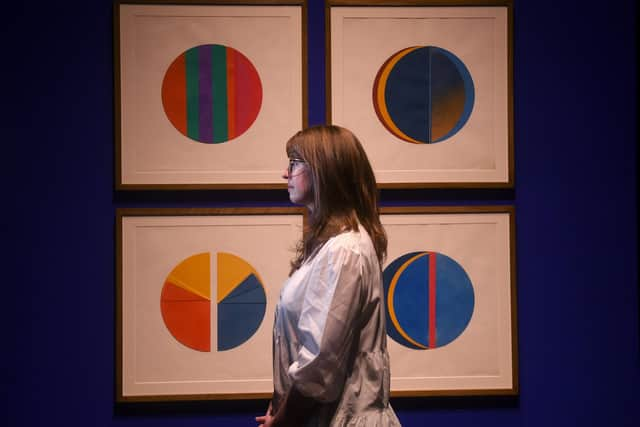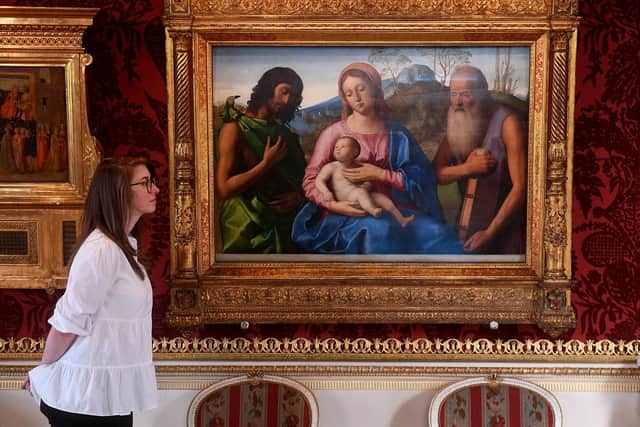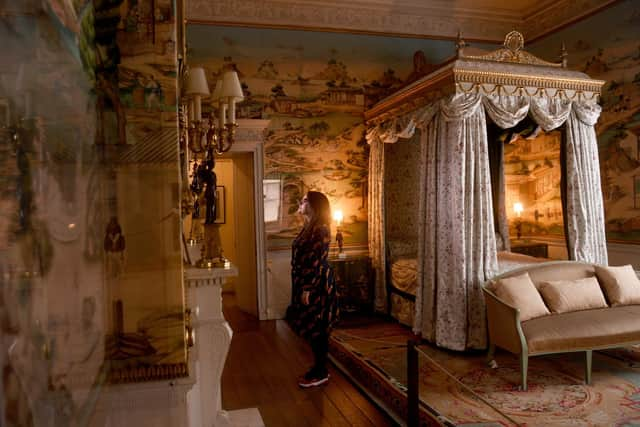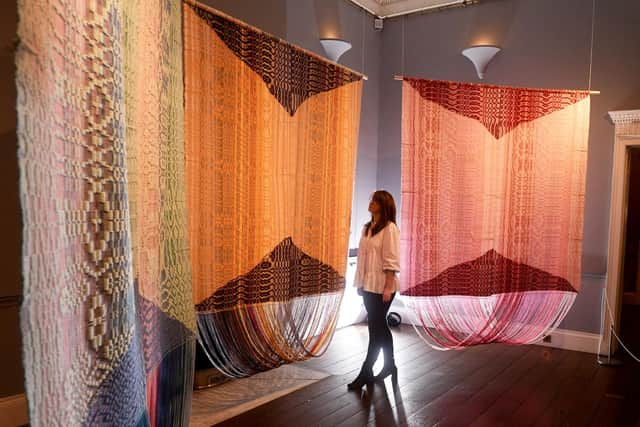The importance of colour highlighted at Harewood House new exhibition
We are surrounded by colour every day, both in the manmade and the natural world. From the colours we choose to dress in, to the ones we paint on our walls and the various hues we see in our outdoor environment, colour impacts on everything we do and experience, and this significance is highlighted in a new exhibition at Harewood House.
Colours Uncovered traces the history and science of colour through selected objects and artworks from the Harewood House collection. It explores what colour can tell us about the history of civilization, scientific discovery, society and culture from the 16th century right up to the present day.
Advertisement
Hide AdAdvertisement
Hide Ad“We have been working on this exhibition as a team for around six months,” says Darren Pih, chief curator and artistic director for Harewood House Trust.


“We wanted to explore the hidden stories of colours within the collection to bring new perspectives and new ways for audiences to connect with the artworks at Harewood. Through the exhibition it is possible for visitors to learn about civilization, fashion and scientific discovery, the way we extract pigments from nature and also the emotional influence of colours.”
Pih and his team have made connections between the vibrant pigments in the Renaissance painting Madonna and Child with St John and St Jerome, attrtibuted to Venetian artists Alvise Vivarini and Marco Basaiti, the blush pink in Sèvres porcelain and the muted natural pigments in work by contemporary artist Max Lamb in a celebration of Harewood’s collection both within the 18th century house and also outside in its extensive gardens.
“We have a great range of expertise amongst the curators at Harewood House and when we first started to meet about this exhibition, we discussed new ways in which we might engage visitors with the collection,” says Pih.
Advertisement
Hide AdAdvertisement
Hide Ad“As well as being able to teach us about science and art history, we are also exploring colours in a psychological sense and how they make us feel.”


The idea is to make the exhibition as accessible as possible, finding links with all aspects of culture and society, both historical and contemporary, so a range of colour experts have been approached to share their specialist knowledge and to provide newly commissioned interpretation texts to accompany the exhibition.
“We have invited designers, horticulturalists and colour psychologists to give us fresh perspectives on what colour can tell us. The exhibition explores how colours are derived from environmental processes and the extraction of pigments from nature. It also contemplates the importance of colour in our lives far beyond aesthetic and cultural impressions, examining how they can affect our moods and carry social and emotional meanings.”
In selecting artworks to focus on, Pih and his team took an expansive approach to create a wide-ranging showcase of artworks, objects and themes.
Advertisement
Hide AdAdvertisement
Hide Ad“It is about uplifting the quality and variety of the collection and emphasizing some of the highlight works,” he says. “So we have new takes on the Italian Renaissance paintings and French porcelain from the 1700s. Also, work from contemporary artists and a look at the pigments in ceramics, textiles and decorative objects. It is quite broad. The ambition was to look at civilization through pigment, but also, to make it very accessible and popular and especially to try and reach young people.”


The show makes some nice, unexpected, links between very recent pop culture events and the historical collection, including a neat nod to a 2023 Hollywood blockbuster.
“In the early stages of planning the exhibition, we were looking at some of the colours in the Chinese wallpaper and the Sèvres porcelain and we made the hot pink connection with the Barbie movie which was such a big hit last year,” says Pih.
“The ‘fond rose’ porcelain was one of the most innovative of 18th century designs and was made to appeal to the fashion-hungry French court. We are also placing into the vases fresh blooms from the gardens so that they are in direct dialogue with the artworks.”
Advertisement
Hide AdAdvertisement
Hide AdThe “fond rose” was a strong pink colour developed by pioneering artists and chemists employed by the Sèvres factory and quickly became a favourite with the French royal court. Harewood’s renowned collection of Sèvres porcelain was acquired by Edward ‘Beau’ Lascelles, son of the 1st Earl, after the French Revolution.


“Fundamentally I believe that audiences need to see themselves reflected in the exhibitions and we constantly need to create new ways to engage with historic collections,” says Phi. “Involving other contributors has been great because they have come up with perspectives that we might not have done ourselves. For example, Claire Wilcox, fashion curator at the V&A, has written about a pink ostrich feather fan which quickly takes you into the 1920s, Diaghelev and the Ballets Russes.” The fan, by Cartier, belonged either to Princess Mary or her mother Queen Mary. It is inscribed with the diamond monogram ‘M’ but more research is required to ascertain which Mary was its owner.
There is also a display of colour theory including colour wheels and historic pigments from the rarely seen collection of the Bradford-based Society of Dyers and Colourists Textile Collection. “Textiles was one of the key industries in Yorkshire and the display explains how Yorkshire came to be at the forefront of colour chemistry in the 19th century,” says Pih. “It led to an explosion of the use of colour in fashion and interior design in the Victorian era.”
Outside the house, the colour spectrum in nature is represented through the wide range of plants from all over the world that feature in the gardens, particularly the spring planting on the Terrace and in the Walled Garden.
Advertisement
Hide AdAdvertisement
Hide Ad“In 2019 we commissioned Max Lamb to make a piece for us,” says Pih. “He created some rugs using natural pigment collected from plants on the Harewood Estate.” The gardens are also the inspiration for another contemporary artwork on display in the House, the large-scale installation Memory Garden by artist Cecilia Charlton.
“It has been interesting thinking about the meaning that is generated between the objects and the audience, and making the links between science and art,” says Pih. “In a more fundamental way, when you talk about the value of art and culture, it is not a luxury. It is the glue that brings people together and connects them. When I think of the Vivarini painting – which has been recently conserved and put back on display – the colours are extraordinary and when you lean into the story the pigment that was used would have been as valuable as gold at the time, so the exhibition also honours the material history of objects.”
It’s an expansive, multi-layered exhibition which provides much food for thought. “Overall, it is about rethinking what constitutes an English Country house,” says Pih. “You can see the history all over the House and if you examine the decorative objects and the stories behind them there is a global narrative – including the extraction of minerals across the world, so it is not hermetically English. There are lots of beautiful artworks and objects on the state floor that haven’t been on display for a while, which I hope audiences will enjoy seeing through a different lens.”
Colours Uncovered runs until June 9, free with admission to Harewood House.